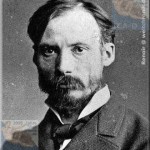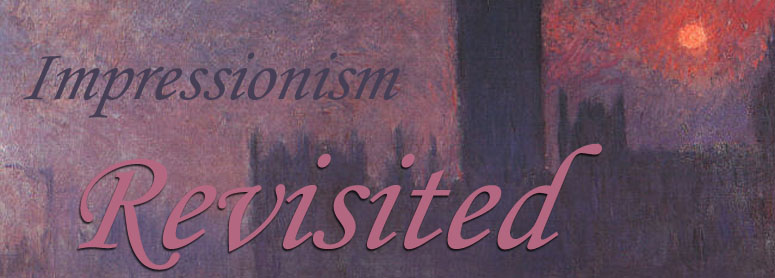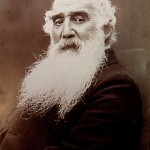By: Abla Kawar
Introduction:
During the mid 1800’s a group of French artists decided that they did not want to conform to society about the new ways of looking at art. Among those Artists were, Camille Pissarro, Paul Cezanne, Claude Monet and Pierre-Auguste Renoir. Those Artists called themselves the Anonymous Society of Painters they came together to launch a movement that would later be considered as the Impressionist movement. This group, also chose not to pursue, in their view, an obsolete form of expression through traditional methods of art and rather considered their art to explore the sensatory variants to portray their more rapidly produced artworks. A valuable asset to an Impressionist is the utilization of light. Artists such as Claude Monet spent hours painting the same view at different times of day to capture the visual variations that light would depict on a motionless object. Similarly, Impressionist artists engaged in similar techniques not commonly adopted by the art community, an example is loose brushstrokes versus the traditional chiaroscuro, to portray their unorthodox stylization of their renditions.
The Impressionist movement polarized techniques and interpretations of commonplace art. The overwhelming question of how Impressionism is definitively different from other other art movements is a question many art historians deliberate. The following guided history page has a number of resources that touch upon the history of Impressionist of the general overview, a artist sections where the framework of artists are included with specific books and websites dedicated to their work and an interaction sections where i have found ideas and short clips about the artists. I hope this research guide finds you well and that you are able to revisit Impressionist art as if you were to experience it first hand. I hope you find this history guide to your advantage while researching!
General Overview:
Impressionism in the Visual Arts
This source is a great start in getting to know what Impressionism is and the basic background about the origin of the movement and its roots. The impressionism in visual arts page is very simple to use and to learn from. Information is visible and well layed out.
“Impressionist art & paintings, What is Impressionist art? Introduction to Impressionism..” Impressionist art & paintings, What is Impressionist art? Introduction to Impressionism.. http://www.impressionism.org/ (accessed July 29, 2013).
The National Gallery
The National Gallery in London gives us a great outlook on the works of Monet, Degas and Renoir. With incorporation of digital versions of critical Impressionist works, this source allows visitors a clear view of creative advances coupled with the contemporary context of European society at the time.
“Guide to Impressionism | Paintings by Monet, Degas and Renoir | National Gallery, London.” The National Gallery, London: Western European painting 1250â1900. http://www.nationalgallery.org.uk/paintings/learn-about-art/guide-to-impressionism/guide-to-impressionism (accessed July 28, 2013).
A Traveling Exhibition
This source is very interesting in that you can see how Impressionist paintings are basically traveling around the world. Works of the most famous artists in the 18th century. The concept is very interesting and perhaps this source can give you a heads up on upcoming exhibitions around your area.
Jose Villarreal. “Impressionist and Modern Masters from the Cleveland Museum of Art – A Traveling Exhibition.” Artdaily.org – The First Art Newspaper on the Net. http://artdaily.com/news/21559/Impressionist-and-Modern-Masters-from-the-Cleveland-Museum-of-Art—A-Traveling-Exhibition (accessed August 1, 2013).
Impressionist Paintings
This is a great website that consists of the impressionist artist paintings, and you can see how most of the paintings of each artist are a group of the same muse at different times of day. On the impressionist paintings page it is very useful if you were to compare artists to each other.
“Impressionist Paintings.” Impressionist Paintings. http://www.impressionist-paintings.net/ (accessed August 2, 2013)
Museum of Fine Arts
The museum of fine arts is an excellent place to look at Impressionism. One of the most famous artists Claude Monet’s work is displayed. And it is fascinating how you can see the focus on light and how he painted the same location at different times of day. The collection is absolutely breathtaking and a very good source to learn about Impressionist art in modern Europe.
“Art of Europe | Museum of Fine Arts, Boston.” Museum of Fine Arts, Boston. http://www.mfa.org/collections/europe (accessed July 26, 2013).
Specific Artists:
This category includes the bibliographies of each specific Impressionist painter, their works and their timeline. In addition, how each Artist contributed to the history of Impressionism in France. Moreover, I have placed them in chronological order of their birth.
Camille Pissarro
This is a website that is specifically about Camille Pissarro. It goes into a good amount of detail and it includes images of his art work. This is a great source if you were looking into researching more about the artist himself.
“Camille Pissarro – The complete works.” Camille Pissarro – The complete works. http://www.camille-pissarro.org/ (accessed August 2, 2013).
Pissarro (Print)
This print is a catalogue that was published in 1980 at the same time of Pissarro’s exhibit, placed at the Hayward Gallery in London in celebration of Pisssaro’s 150th brithday. This catalogue has travelled to the Boston Museum of Fine Arts and Grand Palais in Paris. In this source there are five sections, which include fans, drawings, paintings, ceramics and prints. In the catalogue you can tell that he was extremely devoted to his mediums in his prints.
Pissarro, Camille. Pissarro: Camille Pissarro 1830-1903. London: Arts Council ;, 1980.
Paul Cézanne
This is a website that is specifically about Paul Cezanne. It goes into a good amount of detail and it includes images of his art work. This is a great source if you were looking into researching more about the artist himself.
“Paul Cezanne – The complete works.” Paul Cezanne – The complete works. http://www.paul-cezanne.org/ (accessed August 1, 2013).
Cézanne (Print)
This book is a primary source and it accompanies Cézanne’s finest works in the last 50 years. It gives us an insight on his painting style and how they drift in etchings and sketches. I found this source very effective and engaging.
Cézanne, Paul, and Françoise Cachin.Cézanne. New York: H.N. Abrams in association with the Philadelphia Museum of Art, 1996.
Claude Monet (Print)
This catalogue provides us with a remarkable selection of Claude Monet’s work. Monet spent hours painting the same view at different times of day to capture the visual variations that light would depict on a motionless object. The layout although very simple is very interesting. The information was carefully thought out, therefore making it a very useful source.
Monet, Claude, and Joseph Baillio. Claude Monet, 1840-1926: Paris, Galeries nationales, Grand Palais, September 22, 2010-January 24, 2011. Paris: Réunion des musées nationaux :, 2010.
Claude Monet- paintings, biography and quotes
This is a website that is specifically about Claude Monet. It goes into a good amount of detail about his lifetime and the reason behind his work. The page includes images of his art work. This is a great source if you were looking into researching more about the artist himself.
“Claude Monet – paintings, biography, and quotes of Claude Monet.” Claude Monet – paintings, biography, and quotes of Claude Monet. http://www.claude-monet.com/ (accessed August 1, 2013).
Pierre-Auguste Renoir  (1841-1919)
(1841-1919)
Pierre-Auguste Renoir Biography
This website is a great source that goes about the biography of Renoir and includes images of his work and background information about the french artist. The layout is very simple and easy to find information.
A+E Networks Corporate. ” Pierre-Auguste Renoir Biography – Facts, Birthday, Life Story – Biography.com .” Famous Biographies & TV Shows – Biography.com . http://www.biography.com/people/pierre-auguste-renoir-20693609 (accessed August 3, 2013).
Pierre-Auguste Renoir (1841-1919)
This pocket book on Pierre-Auguste Renoir contains information about the artist and describes his interest in feminine sensuality. It goes on through images of his work and career. This is a great source if you were looking into researching more about the artist himself, because it focuses on the artist’s inquisitiveness and reason behind his work.
Renoir, Auguste, and Milton S. Fox. Pierre Auguste Renoir (1841-1919). New York: H.N. Abrams in association with Pocket Books, 1953.
Interactive Sources:
Impressionist Painters; Biography
This video really captured my attention as they were talking about Monet. It was very insightful about his life and his work. The thought he put into his paintings and the ideas are just incredible. There are also more videos about other artists. This source is really helpful in revisiting Impressionism as it brings their story to life.
A&E Televisions Networks, LLC. ” Impressionists Painters – Biography.com .” Famous Biographies & TV Shows – Biography.com . http://www.biography.com/people/groups/artists/painters/art/painting/impressionists-painters (accessed July 20, 2013).
Impressionism: Art and Modernity
This slide show lets us re-visit Impressionist art through the centuries. It has detailed information about each painting. As you scroll down towards the end of the page it discusses the history of Impressionism and its major figures as well as their art work. It brings Impressionism to life and it is very helpful to get a sense of how it emerged.
Samu, Margaret. “Impressionism: Art and Modernity”. In Heilbrunn Timeline of Art History. New York: The Metropolitan Museum of Art, 2000–. http://www.metmuseum.org/toah/hd/imml/hd_imml.htm (October 2004)



